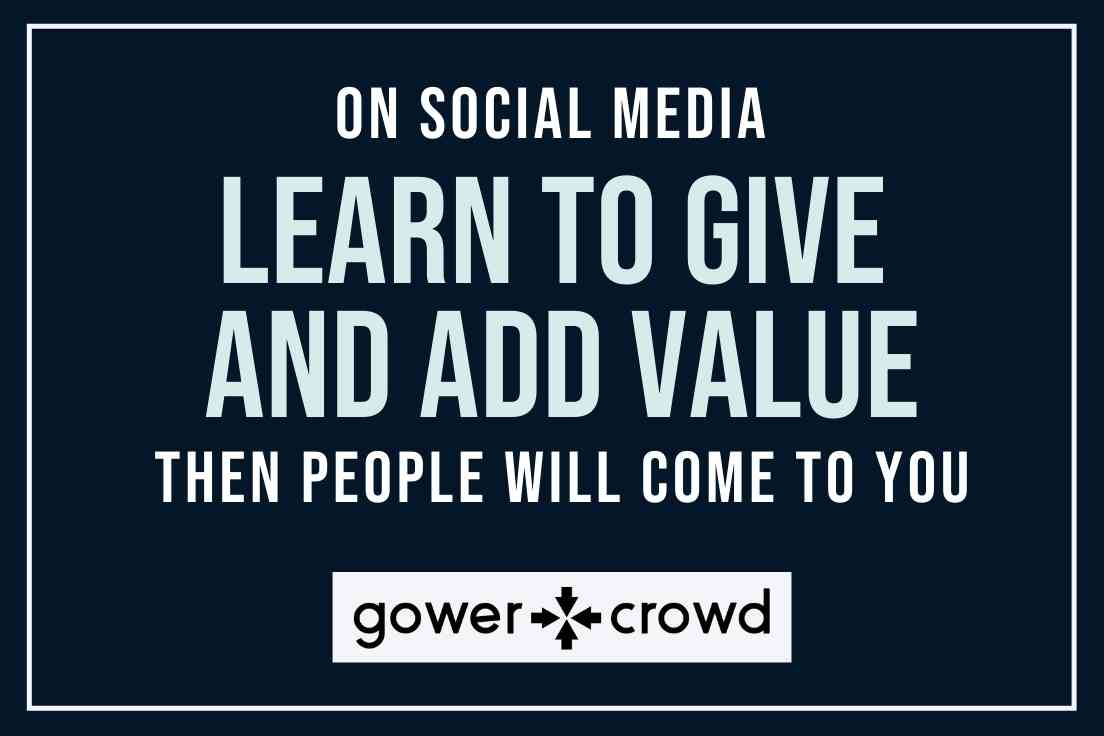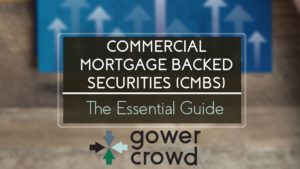6 Ways to Build Your Prospect List Using LinkedIn
This article is based on a conversation I had with Yonah Weiss, LinkedIn networking guru (and cost segregation expert in this spare time). You can find Yonah here.
Real estate sponsors are already incredibly busy, so devoting any time to social media can seem like a daunting task. Indeed, those who engage on social media know how easy it can be to go down a rabbit hole – losing hours at a time. That said, social media can be a great tool for finding potential investors and new real estate deals. In today’s article, we examine how to utilize LinkedIn to grow your network of potential real estate investors without spending your life on it. We’ll show you how to be strategic with your time so that you maximize your LinkedIn efforts.
Why Real Estate Investors Should Be Using Social Media
Regardless of the social media platform, most channels have a stated goal of helping to create communities. Specifically, social media can help create communities of like-minded people. To that end, real estate industry insiders have found social media to be a great way to connect with other industry professionals. These online interactions can, over time and as trust develops, be the source of new deals and even potential investors.
This isn’t to say that deploying a social media strategy will be easy. Indeed, real estate professionals will want to be strategic with how they deploy their time and resources. However, those who use social media effectively will find that it’s a great way to get their name, face, brand and deals in front of thousands of people at once – the economies of scale are quite tremendous.
Why LinkedIn is a Preferred Platform for Growing Your Real Estate Business
Spending time on every social media channel can be all-encompassing. Facebook, Instagram, LinkedIn, Twitter, YouTube, TikTok, Snapchat – there are so many channels vying for your attention. Rather than trying to be present on all channels, focusing solely on LinkedIn is a great way for people to grow their real estate business. Here’s why.
When LinkedIn first came out, it was a place where people would essentially create a business profile and post their CV. Recruiters would troll profiles to find candidates for various jobs. There wasn’t a whole lot of person-to-person engagement happening on the platform. That has dramatically changed over the years.
Now, nearly all real estate professionals have a LinkedIn profile. It’s usually one of the first things that comes up on Google when you search for someone by name.
When someone is searching for you, whether to learn more about you/your company or to do business with you, they’re going to Google you. If your LinkedIn profile shows up toward the top of the search results, people will click that link.
This creates an amazing opportunity for you to get your name, experience and brand in front of someone without much effort. This gives YOU an opportunity to tell YOUR professional story to the world. You have a free profile on which to showcase your business. Those who write their profiles the right way (more on this to come) will find that they can “speak” directly to the person who’s searching for them.
This is incredibly powerful.

How Real Estate Professionals Utilize LinkedIn
LinkedIn now uses a format similar to Facebook, Instagram and Twitter in that it has a newsfeed that people see when they first log in. Real estate professionals will post articles, videos, and other content to ensure they’re routinely showing up in others’ news feeds. Someone with an effective LinkedIn strategy will also be posing interesting questions and commenting on others’ posts. Of course, they keep content and all their engagement professional.
Not sure where to get started? We’ll have some very specific pointers below. But in the meantime, the easiest way to get started on LinkedIn is by creating a profile and then following others in the industry who you admire or can learn from. See what they’re posting about, how often, and begin to discern what they’re doing that seems to be working well. It can be very effective to learn from others before diving in with your own engagement efforts.
Ready to take the plunge? Read on to learn the top six ways to build your LinkedIn network to source new deals and to connect with potential investors.
Six Ways to Build Your LinkedIn Network
As we noted above, growing your LinkedIn network is a great way to uncover new business opportunities including potential real estate deals and prospective investors. Here are six of the best tips for building your LinkedIn network organically.
1. Develop a personal brand.
To be successful on LinkedIn, you’ll want to develop a personal brand – a brand that is honest and authentically “you.” The first step in this process is to make sure you have a professional looking profile that makes it abundantly clear as to who you are, what you do, and what you can offer others. If you don’t have any connections yet, start by connecting with others in the industry (LinkedIn will often give you recommendations based on your job history and/or email connections).
Then, a great way to build your brand is by posting engaging content every single day. (OK, maybe not the weekends, but you get the point!). By consistently posting content, people will begin to recognize you as a voice and a leader in the field. They’ll start to recognize your name and associate that with what you specifically do (which should be clearly defined in the tagline on your LinkedIn profile).
Let’s use the example of someone whose business is focused on conducting cost segregation studies, like my friend Yonah Weiss. Yonah’s LinkedIn tagline says “Cost Segregation Expert.” Now, Yonah routinely posts commercial real estate content and helps other people to network on LinkedIn. The vast majority of what he posts has nothing to do with cost segregation studies. By simply engaging on LinkedIn in this way, people come to recognize Yonah as someone helpful and who constantly provides value of some sort without always selling something. When someone is ready to do a cost segregation study, Yonah will be top of mind for them as someone who is always helpful and they’ll make a mental leap and know to contact him for their next cost segregation study.
2. Create value through information.
When considering what type of content to share, ask yourself whether your audience will find it of value. You want to constantly add value, add value, and add more value before ever making a direct ask of the people around you. Your content can weave in a sales message, but sharing content on social media looks much different than the direct sales pitches of yesteryear. The approach is totally different. Focus on giving people information of value and then they’ll start coming to you.
One way to do this is by educating people about things they don’t know about (but care about). Then they will look at you as the expert and turn to you when they need help with that specific thing. For example, if your company specializes in value-add apartment deals, you’ll want to position yourself as an expert in this area by sharing relevant content; and then when someone’s ready to invest in a value-add real estate deal, you’ll be top of mind.
To be clear, not all content needs to be DIRECTLY related to your SPECIFIC business. In fact, it may be that only 10% of the content you publish is directly related.
Over time, you may come to realize that there’s only so much you can post about YOUR business that people haven’t already heard before. Instead, focus on brand awareness. Just be sure that your profile is very clear as to who you are and what you do, which you can do by posting articles, links and other media about your specific market niche.
3. Expand your digital footprint.
If nobody knows you, there’s no way for them to like or trust you. This is why it’s so important to grow your digital footprint – on LinkedIn and beyond. Starting with LinkedIn: make it easy to find your page and include robust material on your page that tells people more about who you are and what you do.
Beyond LinkedIn: enhance your brand’s visibility by posting content across multiple platforms. Any time you post to LinkedIn, cross-post that content on your other social media channels. This will allow your followers (which may be more personal than professional in nature) to see what you’re up to on a daily basis. After all, leads come in all forms and from all places!
4. Find value-driven connections.
LinkedIn makes it easy to find prospects for your business. Anyone who’s posting about their own wins will be showing up in your newsfeed, which gives an indication that they’re active in the industry and could add value to your business as well. For example, someone might post about having just closed on a property. You can follow-up with them depending on what services you might offer. But again, you don’t want to directly sell – you’ll want to send a friendly message, perhaps congratulating them and following up with a question for them about the deal. This is a great way to keep a conversation going with that person, which may lead to a business opportunity down the road.
That said, you don’t want to connect with just anyone or everyone. Be somewhat exclusive with your LinkedIn connections and make sure the people you engage with provide some sort of mutually-beneficial relationship.
5. Directly engage with your audience.
The real engagement on LinkedIn happens in private messaging and via comments on others’ posts. After all, social media is intended to be social. Become part of industry circles and groups on LinkedIn where you can offer your own insight or ask for the opinions of others.
American entrepreneur Gary Vaynerchuck has what’s known as the “$1.80 Strategy.” He developed this strategy for those looking to grow their Instagram presence but the same strategy can be used on LinkedIn.
The concept is simple: leave your “two cents” on the top 9 trending social media posts for 10 different hashtags that are relevant to your brand or business every single day.
By the end of the day, you will have left much more than your two cents – you’ll have left $1.80 in thoughts online in the specific category, niche or industry in which you want to be known as a leader. You could do this for 90 posts on LinkedIn every day.
Of course, you’d need to spend hours consuming content every day in order to add thoughtful comments to 90 posts. Instead, boil it down to eighteen cents per day if you have to. Rather than putting out 10 piece of your own content every day, you could leave a comment on ten other peoples’ posts with thoughtful comments. These comments should be insightful, inquisitive or spark conversation. By engaging on others’ posts, your name/face/brand could be seen by ten or fifty times as many people than if you were posting your own original content alone (depending on how many followers you have). This is a really easy way to add value and create trust among others. If you add a thoughtful comment to a post, people will pay attention.
If you’re looking for people to comment on your own posts, consider tagging individuals who might be able to provide directly relevant feedback. Just be tactful with your tagging. If you tag 100 people in a post, those people will all feel like just another number and won’t necessarily feel inclined to engage. Worse, the opposite could happen—you might annoy the person with over-tagging and then push them away as a result.
Be sure to engage on your own posts, too. Respond to every comment. “Like” comments. Ask questions in relationship to some of the comments.
What this does, and why this is so important, is because every single action that happens on the post tells the LinkedIn algorithm that this is a post that people are engaging with and as such, it is more likely to show up and be seen by more people. The more eyes you get on your content, the better because it helps to bolster your brand. This strategy is much different than strategies that rely on automating posts that someone may never actually monitor.
6. Sustain your real estate content machine.
We alluded to this above, but it’s worth reiterating – it is important to post content on a consistent basis. The content doesn’t need to be directly related to what you do on a day-to-day basis. Instead, the content might be about things happening in the industry more broadly.
Alternatively, you might post information relevant to your business. For example, you might post a story (on LinkedIn, these are called long-form posts) about a cold call you made years ago to a dismissive CFO, but how you turned that call into a win by responding in a positive way (an actual example of one of Yonah Weiss’s posts). These types of stories absolutely resonate with others in the commercial real estate industry. These personal experiences help to humanize you in an otherwise digital realm.
Over time, it may seem like you’re out of ideas. This is where it can become challenging to sustain your real estate content machine.
One tip to get around this is by creating a content library that you’re constantly adding to. Whenever an idea comes to you, jot it down on a pad of paper or Google doc and then come pack to that idea later. Draft it up, polish it, make it fit within your larger content framework and then save it. You don’t have to use the piece now. You can save it for a rainy day – a week, month or even a year from now when you’re facing writer’s block and need a topic to call upon.
Another strategy is to share little snippets of what’s happening in your business on a day-to-day basis. For example, if you’re being interviewed for a podcast, take a screenshot of that interview while it’s happening and then post that screenshot to LinkedIn to talk about who you were speaking to and why. Then, when that podcast is cleaned up and released, you can share a link back to it with your audience as another bit of content. Now people see that you’re someone who’s worth being interviewed for a podcast, which gives you credibility.
Be Mindful About What’s Working and What’s Not
As you develop your LinkedIn strategy, you’ll find that some of your techniques work better than others. You want to hone in and focus on those that are really working well. One way to do this is by testing various types of content or strategies to see which elicit the most engagement. Continue to monitor what’s working because LinkedIn (the platform itself) uses algorithms that change over time. Certain types of posts will show higher in search results than others, but how these posts rank might vary as algorithms develop.
If some of your content isn’t performing well, don’t be discouraged. Continue to be consistent with posting content and you’ll learn with time.
How to Nurture Leads from LinkedIn
Now that you’ve deployed a LinkedIn strategy, you’ll start getting incoming business leads. The key is to nurture those leads while they’re still warm.
For instance, if someone comments on your post or asks you a question that turns into a more thoughtful conversation, follow-up by connecting with that person on LinkedIn (the equivalent of “Friending” someone on Facebook or “Following” someone on Twitter).
As those online conversations develop (usually by private messages, at this point), consider taking the conversation offline. Ask the person to have a phone conversation, or schedule a Zoom meeting where you can have a more robust discussion with the person. Now you have their contact information that can go directly into your email database.
One LinkedIn feature to consider utilizing is the scheduling plugin. You can, directly on your LinkedIn page, allow someone to schedule a call with you via the platform. That’s a great way to connect with people in a more one-on-one setting.
CONCLUSION
While we’ve focused here on how these strategies can be leveraged by real estate professionals, it’s important to know that these tips can be utilized by anyone looking to grow their business – in the real estate industry or not.
Growing your LinkedIn network takes time, so be patient. Those who are willing to put in the time, energy and effort will find that the incoming business that LinkedIn helps you generate will pay off in spades. The professional nature of LinkedIn means that the leads that come in via this platform will inherently be more qualified than those who come in via other channels, which in turn, will more easily convert to actual business relationships and/or deals.
If you liked this article and would like to learn more about raising capital for real estate investing, check out some of the resources below:
If you have only just started in real estate development, have completed no deals, have no email list, but know you want the freedom and wealth being a real estate developer brings, then I suggest your first step is to start evaluating deals so you can recognize a good one when you see it.
Here’s where you should start. You’ll learn everything you need to know – the different types of real estate, different development strategies, how real estate cycles influence the market, and all about due diligence.
If you want to find deals and raise money for them so you can start your real estate development business, then learning how to conduct due diligence so you can pitch your deals better to investors is a great place to start.
If you’ve already purchased one or more real estate project and are seeing more opportunities than you can finance, then now is the time to start building your investor network so you can finance all your next deals quicker.
You’ve already got some momentum; now start finding and educating prospects about what you’re doing so you can build an email list of people to pitch to when you’re ready to raise money for your next deal.
This is what we build for private clients all the time – it’s called the Investor Acquisition System and you can access the entire program right here so you can find prospects, and convert them into being deep pocketed, repeat investors in your deals.
If you are a seasoned pro with multi-cycle experience, a substantial portfolio, a decent deal pipeline, and find yourself spending too much time raising equity capital because you’re still doing it in-person, then it’s time you put technology to work for you.
The wonderful thing about doing this is that you’re not going to be doing anything different than you’re already doing and, guess what, you’ll never have to sit through investor meetings again.
Sounds crazy I know, but I lay the whole thing out for you in this white board workshop where I personally show you exactly what it takes for you to transform your equity raising into a fully automated, capital raising machine so you can find new investors while increasing commitments from your existing network.
RELATED ARTICLES





